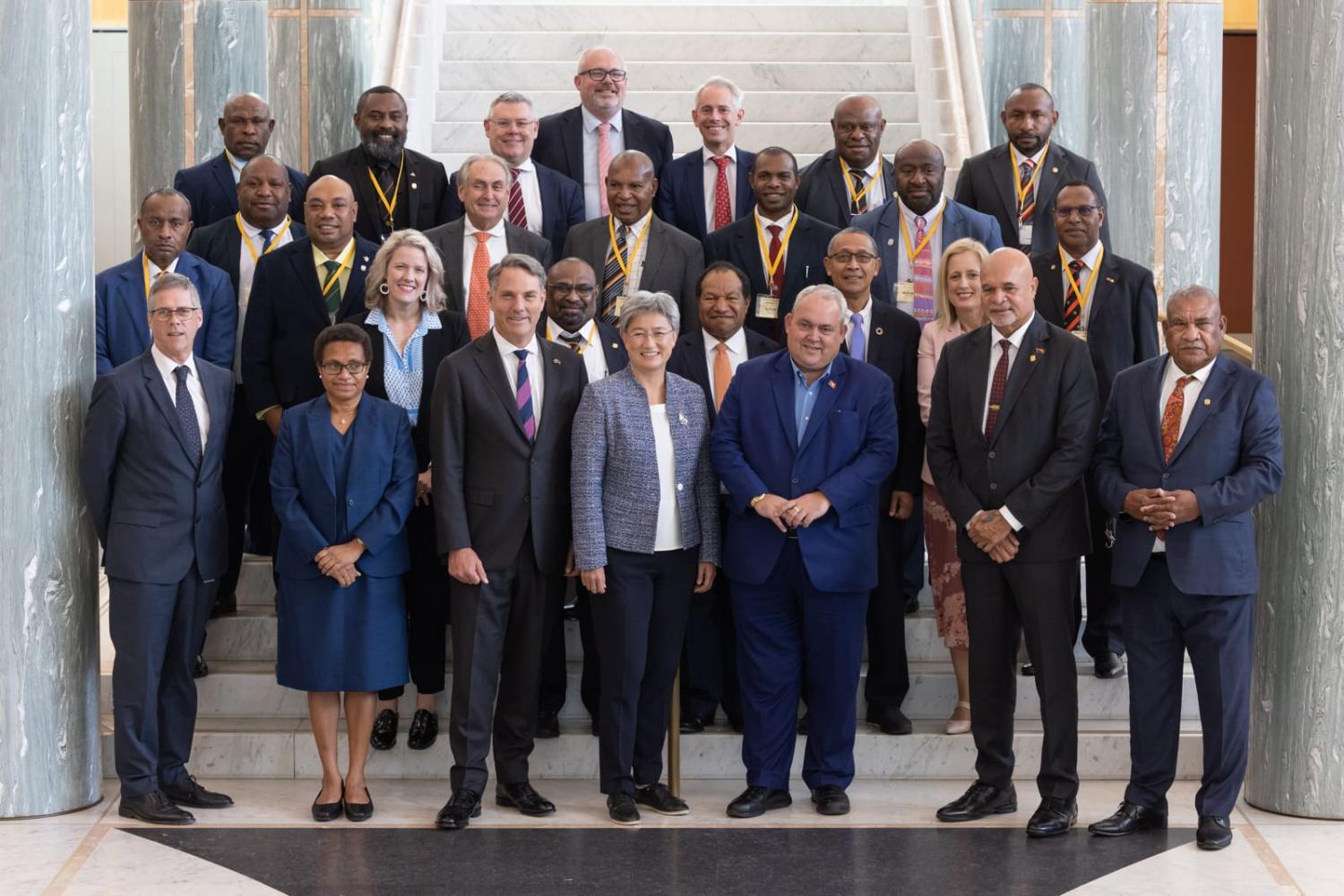A sense of apprehension and optimism could be detected last month as ministers from Australia and Papua New Guinea gathered for the 29th Ministerial Forum between the two countries on 16–17 February. This high-level delegation – ten ministers from Australia, 17 from PNG – came after Australian Prime Minister Anthony Albanese was accorded a rare opportunity in January to speak on the floor of PNG Parliament. The ministerial forum offered the chance to negotiate competing and mutual interests. For Australia, this meant a focus on security. For PNG, it was to reiterate a change in the relationship, from donor/aid recipient to advancing equal bilateral partner.
Two joint ministerial working groups resulted from the meeting. The first on accelerating the Australia–PNG Economic Partnership, centred on improved access to Australia through the Pacific Australia Labour Mobility (PALM) scheme and the soon-to-be-created Pacific Engagement Visa (PEV), along with expedited Australian tourist visas to PNG. The second working group was to conclude negotiations for a Bilateral Security Treaty (BST) by April ahead of an expected signing in June.
It is not surprising that only these two outcomes led to a working group. The BST was a priority for the Australian government leading up to the forum to counter Solomon Islands’ security pact with China. It would enable Australia to quickly re-establish itself as a key political ally with PNG, the biggest nation in the Pacific, ensuring it remains the partner of choice when addressing strengthened regional and domestic security. This “Pacific family first” approach also resonated with the PEV, expedited tourist visas and expansion of labour mechanisms to support PNG with its ambitious target to see 8,000 workers in the PALM scheme by 2025.
Two Memorandums of Understanding were also signed: an MoU on Cyber Cooperation between PNG and Australia was renewed to further support the building of cyber resilience within the Indo-Pacific region; and an MoU on Forestry Cooperation that aimed to combat illegal logging, strengthen sustainable forest industries and foster best practice forest management.
It is interesting that given Australia’s continued commitment to combating climate change in the region and working together for the 2050 Strategy for the Blue Pacific, that there was no MoU signed for the Indo-Pacific Carbon Offsets Scheme (IPCOS). This was instead delayed to early next year. PNG has the third-largest rainforest in the world and would have benefited significantly from swifter action.
While the ministers agreed that all bilateral development cooperation programs should be aligned to PNG’s soon-to-be launched fourth Medium Term Development Plan 2023–27, it also serves as an important reminder to traditional and prospective bilateral partners of the need for their own programs to align with the MTDP. The details of the MTDP should become clear over the coming months when the vigorous stakeholder consultation process that began in October last year has been completed. It is one issue, though, to advocate for alignment to the MTDP, and another to actually pursue equal bilateral engagement.
Despite PNG’s renewed affirmations about becoming an equal partner, Australia will invest around AU$200 million in PNG for infrastructure projects in 2022–23. PNG will also receive almost AU$1.8 billion (PGK 4.2 billion) from the Australian Infrastructure Financing Facility for the Pacific in separate funding, which includes about AU$790 million towards supporting “major capital projects in ports (AU$621 million), roads (AU$76 million) and electrification (AU$92 million) across PNG”. This investment will be delivered through a combination of loans and grants. While the total overseas development assistance to PNG from Australia has reduced from AU$745.8 million (2020–21) to AU$479.2 million (2022–23), the onus is on the PNG government to demonstrate that it is a capable equal partner. At what point as a continued recipient of aid can PNG confidently affirm its position as an equal partner?
Changing its donor/aid recipient position will rely solely on the PNG government’s ability to demonstrate self-reliance. PNG will need to strongly advocate for alignment to its MTDP, not only in bilateral engagements but also domestically through a multi-sectoral approach. These forums also need to drive more action-led outputs within agreed timelines based on mutual priorities of economic security. It remains PNG’s prerogative to decide on its preferred partner(s) of choice through bilateral development cooperation and these forums create the platform for ongoing dialogue.

